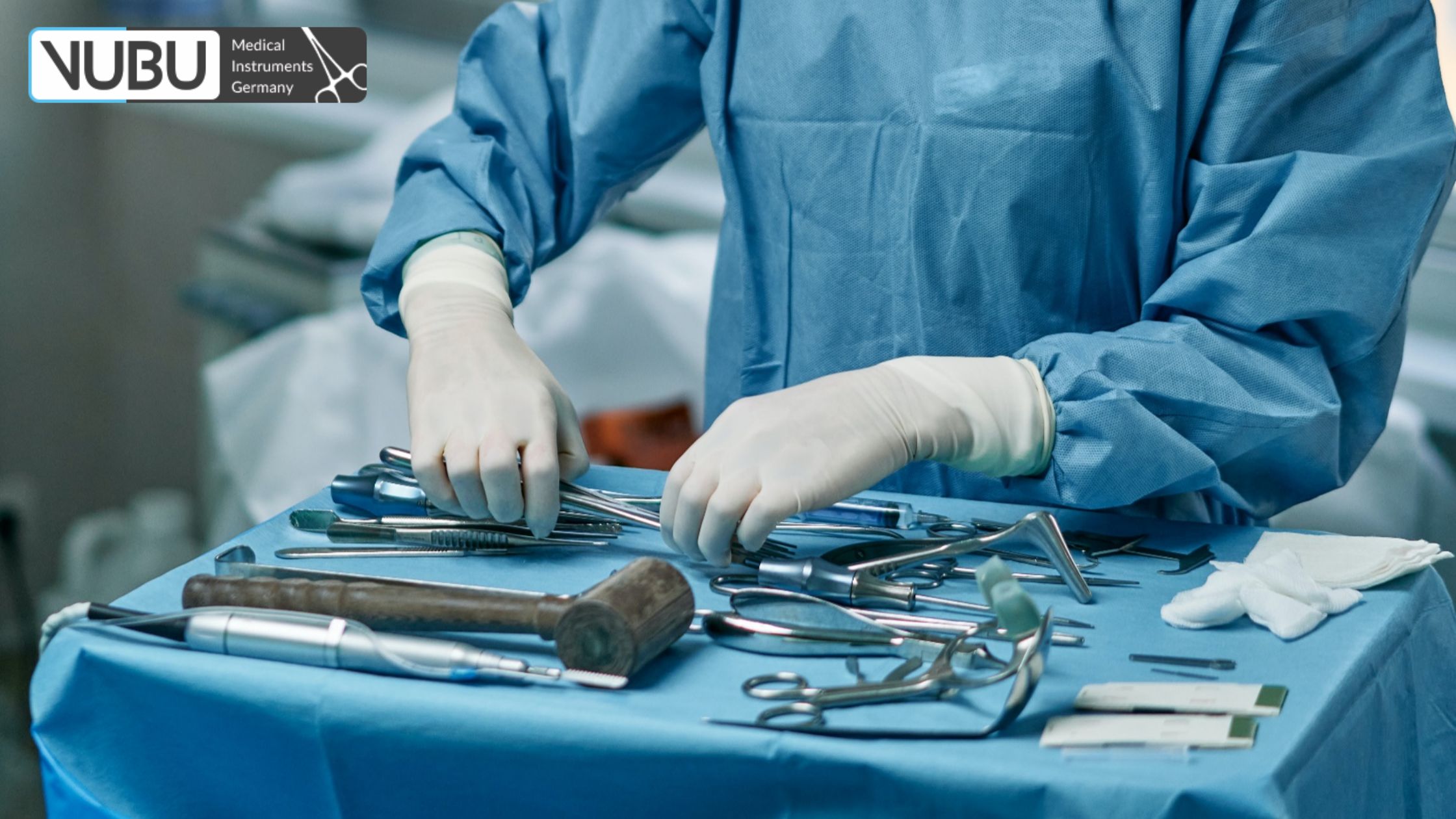Germany’s Precision Edge: A Deep Dive into Beauty and General Surgical Instruments
Germany has long been synonymous with engineering excellence, and the medical device industry is no exception. When it comes to surgical instruments, the phrase “German precision” is not just a marketing slogan; it’s a testament to centuries of meticulous craftsmanship, innovative design, and unwavering commitment to quality. From delicate instruments used in reconstructive plastic surgery to robust clamps for general procedures, German manufacturers have set a global benchmark. This article delves into the intricate world of beauty and general surgical instruments in Germany, exploring key players, market dynamics, and the enduring legacy of their precision tools.
The Foundation of Excellence: Why German Surgical Instruments Stand Apart
The reputation of German surgical instruments is built on several pillars:
-
Exceptional Materials: Manufacturers prioritize the use of high-grade stainless steel and other advanced alloys, ensuring instruments are durable, corrosion-resistant, and maintain their sharpness and integrity over countless sterilization cycles.
-
Precision Engineering: German instrument makers employ state-of-the-art manufacturing processes, often combining traditional hand-finishing techniques with advanced CNC machining to achieve unparalleled accuracy and ergonomic design.
-
Rigorous Quality Control: Every instrument undergoes stringent quality checks at multiple stages of production, adhering to international standards and often exceeding them. This meticulous attention to detail minimizes defects and guarantees reliability.
-
Innovation and Research: German companies invest heavily in R&D, collaborating with surgeons and medical professionals to develop new instruments that address evolving surgical techniques and patient needs.
-
Ergonomics: Instruments are designed with the surgeon in mind, focusing on balance, grip, and feel to reduce hand fatigue and enhance control during complex procedures.
Beauty and Beyond: Specialized Instruments for Plastic Surgery
Plastic surgery, or “Plastische Chirurgie” in German, demands instruments of the utmost finesse and precision. The goal is often to achieve aesthetically pleasing results with minimal scarring and optimal tissue preservation. German manufacturers have excelled in this niche, providing surgeons with a comprehensive array of tools.
Key Plastic Surgery Instruments and Their German Innovations:
-
Micro Scissors and Forceps: For delicate tissue dissection and suturing in reconstructive or cosmetic procedures, German micro scissors and forceps offer extremely fine tips and precise cutting/grasping capabilities. They are often crafted with non-glare finishes to minimize light reflection in the surgical field.
-
Skin Hooks and Retractors: Designed for gentle tissue retraction and exposure, these instruments come in various shapes and sizes to accommodate different anatomical areas. German innovations often focus on lightweight designs and ergonomic handles.
-
Needle Holders: The Baby Crile Wood Needle Holder is a prime example of a specialized instrument revered in plastic surgery. Its fine jaws and precise mechanism are ideal for handling delicate sutures, ensuring accurate needle placement without damaging the thread or tissue. German versions are known for their smooth ratcheting mechanism and durable construction.
-
Calipers and Markers: For precise measurements and markings before incisions, German-made calipers and markers ensure symmetrical and accurate surgical planning.
-
Liposuction Cannulas: German companies produce a wide range of liposuction cannulas with various tip designs (e.g., blunt, multi-hole) and diameters, designed for efficient fat harvesting with minimal trauma to surrounding tissues.
The market for surgical instruments for plastic surgery in Germany is robust, driven by a strong demand for cosmetic and reconstructive procedures. Companies in this sector not only supply the domestic market but also export extensively, underscoring their global reputation.
The Workhorse of the OR: General Surgery Instruments Sets
While plastic surgery demands finesse, general surgery requires a broader spectrum of instruments, from robust cutting tools to powerful clamps, all designed for efficiency and safety in a wide range of procedures. A general surgery instruments set typically includes a foundational collection of tools essential for almost any operation.
Essential Instruments in a German General Surgery Set:
-
Surgical Scalpels and Blades: The Germany surgical scalpel market and Germany surgical blades market are significant components of the overall surgical instrument industry. German blades are known for their consistent sharpness and durability, ensuring clean incisions. Handles are designed for secure grip and control.
-
Surgical Clamps: These are indispensable for grasping, holding, and occluding tissues or blood vessels.
-
Surgical clamps with teeth provide a secure grip on tougher tissues, while those without teeth are used for more delicate structures.
-
German manufacturers offer a vast array of clamps, including Hemostatic Clamps (e.g., Kelly, Crile, Rochester-Pean), Tissue Forceps (e.g., Allis, Babcock), and Intestinal Clamps (e.g., Doyen). Their quality ensures reliable occlusion and minimal tissue trauma.
-
-
Surgical Scissors: From heavy-duty Mayo scissors for cutting tough fascia to delicate Metzenbaum scissors for fine dissection, German surgical scissors are engineered for precise cutting action and long-lasting sharpness.
-
Retractors: These instruments hold back tissue and organs to provide a clear view of the surgical site. German retractors come in various designs (e.g., self-retaining, handheld) and are known for their robust construction and secure locking mechanisms.
-
Needle Holders: Beyond the specialized plastic surgery versions, general surgery requires robust needle holders capable of handling heavier sutures and larger needles, often with tungsten carbide inserts for enhanced grip and longevity.
-
Tissue Forceps: Used for grasping and manipulating tissues, these range from fine toothed forceps for skin closure to broader, atraumatic forceps for organ handling.
The reliability and consistent performance of German-made general surgical instruments are paramount, directly contributing to patient safety and successful surgical outcomes.
Beyond Human Medicine: Veterinary and Dental Instruments
The precision and quality demanded in human surgery extend naturally to other medical fields. Germany’s expertise in surgical instruments also significantly impacts the germany veterinary surgical instruments market and the dental instruments importers in Germany and manufacturing sectors.
Veterinary Surgical Instruments:
Veterinary surgery often mirrors human surgical techniques but requires instruments adapted for various animal anatomies and tissue types. German manufacturers produce a full range of veterinary surgical instruments, including:
-
Specialized retractors for different animal sizes.
-
Robust bone-cutting instruments for orthopedic procedures.
-
Fine instruments for ophthalmic and delicate soft tissue surgery in small animals.
-
Larger, stronger clamps and scissors for equine or large animal surgery.
The demand for high-quality veterinary instruments is growing globally, driven by advancements in animal medicine, and German suppliers are key players in meeting this need.
Dental Instruments:
While distinct from general surgical instruments, dental instruments share the same need for precision, durability, and ergonomic design. Germany is a significant hub for dental instrument manufacturing and innovation.
-
Basic surgical instruments like dental forceps, elevators, and bone files are produced with the same high standards as their medical counterparts.
-
The dental instruments importers in Germany market is also active, bringing in specialized tools from around the world, though domestic production remains strong for many core items.
-
German dental instruments are known for their longevity and efficacy in procedures ranging from extractions and implantology to restorative dentistry.
Key Players and Market Dynamics: “VBMED Medical Instruments Germany” and Beyond
The German surgical instrument market is characterized by a mix of large, established manufacturers with global reach and numerous smaller, specialized companies, often family-owned, that focus on niche areas or custom instrument production.
One notable presence in the industry, often representative of the German quality standard, might be a company such as VBMED Medical Instruments Germany (or similar, given the keyword “vubu medical instruments germany” which might indicate a specific brand or a general category). Such companies typically embody the commitment to precision engineering, high-quality materials, and extensive product ranges that define the German industry. They often serve both the domestic market and have strong export divisions, making them a significant part of the surgical instruments buyers in Germany landscape, as well as a global supplier.
Leading Regions and Clusters:
The town of Tuttlingen in Baden-Württemberg is famously known as the “World Centre of Medical Technology.” This region has a unique ecosystem of medical device manufacturers, suppliers, and skilled craftsmen, fostering an environment of innovation and unparalleled expertise. Many of the companies specializing in German surgical instruments have their roots or operations here.
Market Trends:
-
Minimally Invasive Surgery (MIS): There’s a growing demand for specialized instruments for laparoscopic, endoscopic, and robotic-assisted surgeries. German manufacturers are at the forefront of developing smaller, more precise, and highly articulated instruments for these advanced techniques.
-
Ergonomics and Lightweight Design: Continuous improvement in instrument design focuses on reducing surgeon fatigue, especially during long procedures. Materials like titanium are increasingly used to make instruments lighter without compromising strength.
-
Integration of Technology: Smart instruments with integrated sensors, imaging capabilities, or robotic interfaces are emerging, reflecting the broader trend of digitalization in healthcare.
-
Sustainability: Manufacturers are increasingly considering the environmental impact of their production processes and products, exploring more sustainable materials and manufacturing methods.
-
Global Competition: While German instruments command a premium due to their quality, they face increasing competition from manufacturers in other countries. However, the reputation for reliability and longevity continues to drive demand.
The Process: From Concept to Operating Room
The journey of a German surgical instrument from concept to the operating room is a rigorous one:
-
Conception and Design: Often initiated by surgeons’ feedback or R&D teams identifying a need, designs are meticulously planned, considering ergonomics, functionality, and material science.
-
Material Selection: High-grade, biocompatible stainless steels (e.g., AISI 304, 420) or other specialized alloys are chosen.
-
Forging and Machining: Blanks are forged or precision-machined to create the basic shape. This is where the strength and initial geometry are established.
-
Grinding and Milling: Instruments are then ground and milled to achieve their exact dimensions and features, such as serrations on clamps or cutting edges on scissors.
-
Heat Treatment: This crucial step involves controlled heating and cooling to harden the steel, enhancing its durability, spring retention, and cutting-edge retention.
-
Finishing and Polishing: Surfaces are carefully polished to achieve a smooth, easy-to-clean finish that resists corrosion and reduces glare.
-
Assembly: For instruments with multiple parts, like scissors or clamps, precise assembly ensures smooth articulation and proper function.
-
Sharpening and Edge Retention: Cutting instruments undergo meticulous sharpening and honing processes to achieve razor-sharp edges that last.
-
Quality Control: Every instrument is individually inspected, often under magnification, to check for defects, ensure proper alignment, test functionality (e.g., ratcheting of clamps, sharpness of blades), and verify adherence to specifications.
-
Sterilization and Packaging: Instruments are cleaned, sterilized (if applicable to the final packaging), and packaged for distribution, often in specialized trays or sets.
Conclusion: A Legacy of Precision in Every Cut
The German surgical instrument industry represents a profound commitment to excellence, playing a critical role in advancing both beauty and general surgical practices worldwide. From the delicate touch required for plastic surgery to the robust demands of general procedures, German instruments provide surgeons with the reliability, precision, and durability they need to achieve optimal patient outcomes.
The enduring legacy of German craftsmanship, combined with continuous innovation, ensures that companies like those providing basic surgical instruments and specialized tools will continue to shape the future of medicine. For any medical professional or institution seeking tools that embody meticulous engineering and unwavering quality, looking to the “Made in Germany” label on surgical instruments remains a benchmark of trust and performance. The precision of a surgical clamp, the sharpness of a surgical scalpel, or the delicate action of a baby Crile Wood needle holder – each reflects a centuries-old tradition of perfection, proving that in surgery, every detail matters.
Also Read:


